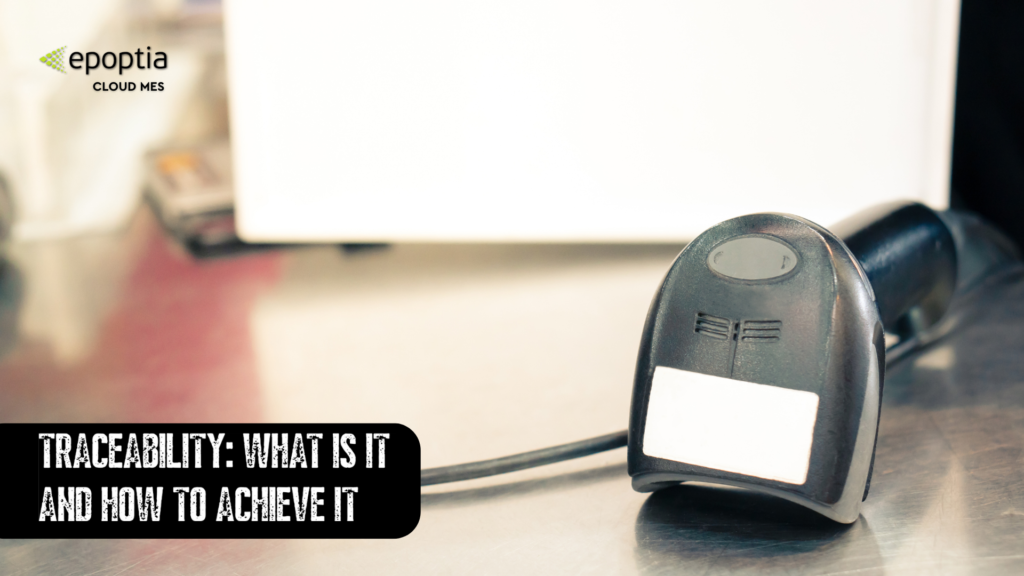Learn about traceability and how it can help you transform your manufacturing business
In the fast-paced and complex world of manufacturing, ensuring product quality, compliance and supply chain transparency is paramount. This is where traceability comes into play. It is the ability to track and trace the journey of a product or item throughout its entire supply chain, from its origin to the end consumer. This means that companies can identify where a product came from, where it has been, and who has handled it at each step along the way. Traceability is important for a number of reasons. It can help to ensure product safety, by allowing companies to identify and remove contaminated or defective products. It can also help to improve customer satisfaction, by giving consumers peace of mind knowing that they are buying safe and reliable products. In addition, it can help companies to comply with regulations.
Benefits of Traceability
Implementing robust traceability measures offers numerous benefits to manufacturers. Some key advantages include:
1. Product safety: Traceability can help to ensure product safety by allowing companies to identify and remove contaminated or defective products from the supply chain. This can help to protect consumers from harm.
2. Customer satisfaction: Traceability can help to improve customer satisfaction by giving consumers peace of mind knowing that they are buying safe and reliable products.
3. Compliance with regulations: In many industries, traceability is required by law. For example, the Food and Drug Administration (FDA) requires food manufacturers to have traceability systems in place.
4. Improved supply chain management: Traceability can help to improve supply chain management by giving companies greater visibility into their supply chains. This can help to reduce costs, improve efficiency, and prevent disruptions.
5. Brand protection: Traceability can help to protect brands by allowing companies to track counterfeit products and take action against those who are selling them.
How to Achieve Traceability
There are a number of ways to achieve traceability. The most common way is to use barcodes or RFID tags to identify products. Then, this information can then be stored in a database or a traceability software system. Moreover, another way to achieve traceability is to use serialization. Serialization involves assigning a unique identifier to each product. This identifier can then be used to track the product throughout its entire lifecycle. The best way to achieve traceability will depend on the specific needs of the company. However, all traceability systems should include the following elements:
1. A way to identify products: This can be done using barcodes, RFID tags, or serialization.
2. A way to store product information: This information should include the product’s identification number, as well as information about its origin, manufacturing process, and distribution.
3. A way to track product movement: This information should include the product’s journey through the supply chain, as well as any changes in its status.
Using Traceability Software
Using a traceability software system can help companies to implement and manage their traceability programs. Traceability software typically includes the following features:
1. Product identification: This feature allows companies to create and manage product identification codes.
2. Product information storage: This feature allows companies to store information about their products, such as their origin, manufacturing process, and distribution.
3. Product movement tracking: This feature allows companies to track the movement of their products through the supply chain.
4. Reporting and analysis: This feature allows companies to generate reports and analyze data about their traceability programs.
Epoptia is a traceability software system that can help companies to achieve traceability in a number of industries, including food and beverage, pharmaceutical, and manufacturing. What is more, it includes all of the features mentioned above, as well as a number of additional features, such as:
1. Real-time data collection: It collects data in real time, which allows companies to track the movement of their products in real time.
2. Mobile access: You can acess Epoptia MES from mobile devices, which allows companies to track their products from anywhere.
3. Cloud-based: Epoptia MES is cloud-based, which makes it easy to implement and manage.
Achieving traceability in manufacturing is crucial for optimizing operations, ensuring product quality, and complying with regulatory requirements. Epoptia MES offers a comprehensive suite of solutions, including traceability software, designed to help manufacturers achieve and maintain traceability throughout their production processes. Our software empowers manufacturers, enabling them to unlock the benefits of traceability and drive operational excellence.
Request a presentation with today to discover how our solutions can transform your manufacturing processes and propel your business forward.
For more information, check https://bit.ly/3vYnb4f.
































